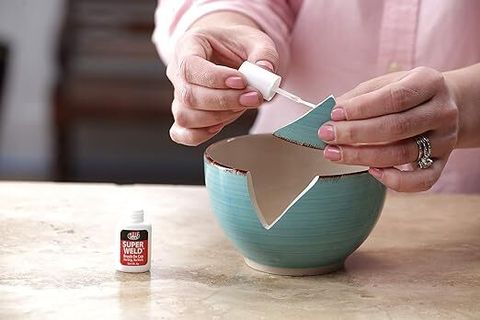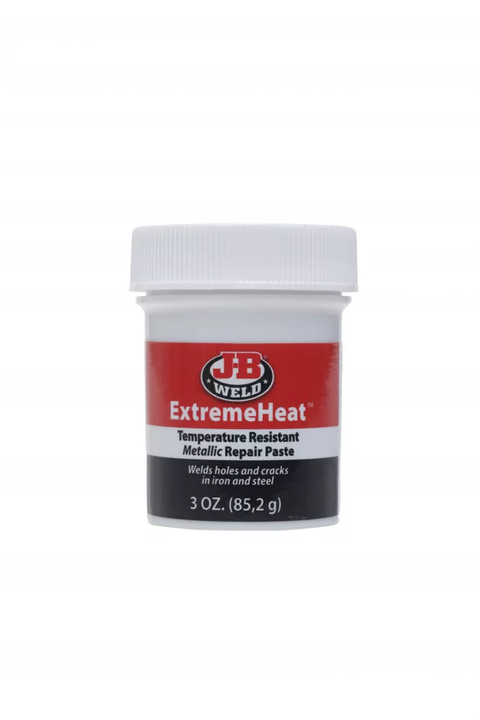10 Proven Methods to Effectively Remove Super Glue Stains from Any Surface
We've all been there—a DIY project gone wrong or a little mishap that leaves your favorite surface marred by stubborn super glue stains. These uninvited marks can turn a beautiful table or a precious piece of clothing into a headache. But fear not! Removing super glue doesn't have to be a daunting task. With the right techniques at your disposal, you can reclaim your surfaces and restore them to their former glory. In this article, we’ll explore 10 proven methods to effectively remove super glue stains from any surface, whether it’s wood, fabric, plastic, or glass. Each method is simple, safe, and backed by practical advice, so you can tackle those pesky stains with confidence. Say goodbye to the stress of super glue mishaps and get ready to discover how to make your surfaces shine bright once again!
Understanding Super Glue: What Makes It So Stubborn?
Super glue, also known as cyanoacrylate adhesive, is a fast-acting adhesive that bonds almost instantaneously to various surfaces. Its rapid bonding properties and strong adhesion make it a popular choice for quick fixes and DIY projects. However, these same properties also make super glue notoriously difficult to remove once it has adhered to a surface. The glue works by reacting with moisture in the air and on the surfaces it comes into contact with, creating a tight bond that can be challenging to break.
One of the key characteristics of super glue is its ability to form a very strong bond in a very short period of time. This is due to the polymerization process that occurs when the glue comes into contact with moisture. The glue molecules rapidly link together to form long chains, creating a solid and durable adhesive bond. This quick-setting nature means that any attempt to remove super glue must be swift and effective, as the bond strengthens over time.
Another factor that contributes to the stubbornness of super glue is its versatility in adhering to different materials. Whether it’s wood, fabric, plastic, or glass, super glue can create a robust bond on almost any surface. This versatility is a double-edged sword; while it makes super glue incredibly useful, it also means that removing it requires a variety of techniques tailored to the specific material affected. Understanding these unique properties is the first step in effectively tackling super glue stains without causing damage to the underlying surface.
Safety Precautions Before Attempting to Remove Super Glue
Before diving into the various methods for removing super glue, it’s essential to take some safety precautions. Many of the substances used in these methods, such as acetone and rubbing alcohol, are potent chemicals that can cause harm if not handled properly. Always work in a well-ventilated area to avoid inhaling fumes, and consider wearing gloves to protect your skin from irritation or chemical burns.
When dealing with delicate surfaces or valuable items, it’s a good idea to test your chosen removal method on a small, inconspicuous area first. This will help you gauge how the material reacts to the treatment and prevent any potential damage. Additionally, make sure to read and follow any safety instructions provided on the labels of commercial adhesive removers or other chemical products. Some products may require specific handling procedures to ensure safe and effective use.
It’s also crucial to have the right tools on hand. Soft cloths, cotton swabs, plastic scrapers, and even old toothbrushes can be valuable aids in the removal process. Avoid using metal tools or abrasive materials that could scratch or damage the surface you’re working on. By taking these safety precautions and being prepared with the appropriate tools, you’ll be better equipped to remove super glue stains without causing further issues.
Method 1: Acetone – The Go-To Solution
Acetone is one of the most effective and commonly used solutions for removing super glue. It works by breaking down the glue’s bond, making it easier to wipe away. Acetone is a key ingredient in many nail polish removers, so if you don’t have pure acetone on hand, a nail polish remover containing acetone can be a suitable alternative. To use acetone for super glue removal, start by soaking a cotton ball or cloth in the acetone.
Gently place the soaked cotton ball on the glue stain and allow it to sit for a few minutes. This will give the acetone time to penetrate the glue and begin breaking down the adhesive bond. After a few minutes, use a soft cloth or a plastic scraper to gently rub or scrape away the softened glue. Be sure to work slowly and carefully to avoid damaging the surface beneath the glue. Repeat the process if necessary until the glue is completely removed.
It’s important to note that acetone can be harsh on certain materials, such as some plastics and finished surfaces. Always test a small, hidden area first to ensure that the acetone does not cause discoloration or damage. Additionally, acetone is highly flammable, so use it with caution and keep it away from open flames or heat sources. Proper ventilation is also crucial when working with acetone to avoid inhaling the fumes.
Method 2: Rubbing Alcohol for Gentle Removal
Rubbing alcohol, also known as isopropyl alcohol, is another effective method for removing super glue stains, particularly on more delicate surfaces where acetone might be too harsh. Rubbing alcohol works by dissolving the glue, making it easier to wipe away without causing damage to the underlying material. To use rubbing alcohol for glue removal, start by soaking a cotton ball or cloth in the alcohol.
Apply the soaked cotton ball to the glue stain and let it sit for a few minutes to allow the alcohol to penetrate and soften the adhesive. After the glue has had time to loosen, gently rub the area with a soft cloth or use a plastic scraper to lift the glue from the surface. Be patient and repeat the process if necessary, as rubbing alcohol may take a bit longer to dissolve the glue compared to acetone.
Rubbing alcohol is generally safe to use on a wide range of materials, including wood, fabric, and plastic. However, it’s still a good idea to perform a patch test on an inconspicuous area before applying it to the entire stain. This will help ensure that the alcohol does not cause any adverse reactions or damage to the surface. Additionally, because rubbing alcohol is less harsh than acetone, it can be a preferred choice for more sensitive surfaces.
Method 3: Vinegar – A Natural Alternative
For those who prefer a more natural approach to removing super glue stains, vinegar can be an excellent alternative. Vinegar is a mild acid that can help break down the adhesive bond of super glue, making it easier to remove. White vinegar is typically the best choice, as it is clear and less likely to cause staining. To use vinegar for glue removal, start by soaking a cloth or cotton ball in vinegar.
Place the vinegar-soaked cloth on the glue stain and allow it to sit for several minutes. The acid in the vinegar will work to dissolve the glue, loosening its grip on the surface. After the glue has softened, use a soft cloth or plastic scraper to gently rub or scrape away the adhesive. You may need to repeat the process a few times to completely remove all traces of the glue.
Vinegar is a safe and eco-friendly option that can be used on a variety of surfaces, including glass, plastic, and fabric. However, as with any removal method, it’s wise to test a small, hidden area first to ensure that the vinegar does not cause any damage or discoloration. Vinegar is also non-toxic and less likely to cause irritation compared to chemical solvents, making it a great choice for those with sensitive skin or allergies.
Method 4: Commercial Adhesive Removers
Commercial adhesive removers are specially formulated products designed to dissolve and remove adhesives like super glue. These products can be highly effective and are often available in hardware stores, craft stores, and online. When using a commercial adhesive remover, it’s important to follow the manufacturer’s instructions carefully to ensure safe and effective use. Start by applying the remover to the glue stain according to the product’s directions.
Allow the adhesive remover to sit on the glue for the recommended amount of time. This will give the product time to penetrate and break down the adhesive bond. After the specified time has passed, use a soft cloth or plastic scraper to gently remove the softened glue from the surface. Depending on the strength of the glue and the effectiveness of the remover, you may need to repeat the process to fully eliminate the stain.
Commercial adhesive removers are typically formulated to be safe for use on a variety of surfaces, but it’s still a good idea to perform a patch test on an inconspicuous area before applying the product to the entire stain. Additionally, these products can contain strong chemicals, so make sure to use them in a well-ventilated area and follow all safety precautions provided on the label. Proper storage and handling are also important to prevent accidents or spills.
Method 5: Scraping Techniques for Stubborn Spots
Sometimes, super glue stains can be particularly stubborn and may require a bit of physical effort to remove. Scraping techniques can be effective for these tough spots, but it’s important to use the right tools and approach to avoid damaging the surface. Plastic scrapers, old credit cards, or even the edge of a plastic spoon can be useful tools for gently scraping away super glue without causing scratches.
Before attempting to scrape the glue, it’s often helpful to use one of the previously mentioned methods, such as acetone, rubbing alcohol, or vinegar, to soften the glue first. This will make the scraping process easier and reduce the risk of damaging the surface. Once the glue has been softened, use your chosen scraper to gently lift and peel away the adhesive. Work slowly and carefully, applying even pressure to avoid gouging or scratching the material.
For particularly stubborn spots, you can also use a combination of scraping and chemical methods. Apply a small amount of acetone or rubbing alcohol to the glue, allow it to soften, and then use the scraper to lift the glue. Repeat as necessary until the stain is fully removed. Patience and a gentle touch are key to successfully removing super glue with scraping techniques, ensuring that you restore your surface without causing further damage.
Method 6: Heat Application to Loosen the Bond
Applying heat can be an effective way to loosen the bond of super glue, making it easier to remove. Heat softens the adhesive, allowing it to be gently peeled or scraped away. There are a few different methods for applying heat, including using a hairdryer or a heat gun. When using heat to remove super glue, it’s important to be cautious and avoid overheating the surface, which could cause damage.
To use a hairdryer, set it to a medium or high heat setting and direct the warm air onto the glue stain. Hold the hairdryer a few inches away from the surface to prevent overheating. Allow the heat to soften the glue for a few minutes, then use a plastic scraper or soft cloth to gently remove the adhesive. If the glue does not come off easily, you can apply more heat and try again.
A heat gun can also be used, but it’s important to use it on a lower setting and keep it at a safe distance from the surface to avoid causing damage. Heat guns are more powerful than hairdryers and can generate higher temperatures, so proceed with caution. After applying heat, use a scraper or cloth to remove the softened glue. Heat application can be particularly useful for removing super glue from heat-resistant surfaces like metal or glass.
Method 7: Using Oils and Lubricants
Oils and lubricants can be effective in loosening super glue stains, especially on surfaces where other methods might be too harsh. Household oils, such as vegetable oil, olive oil, or even baby oil, can help break down the adhesive bond. These oils work by penetrating the glue and reducing its adhesion to the surface, making it easier to wipe away.
To use oil for glue removal, apply a generous amount of oil to the glue stain and let it sit for several minutes. This will allow the oil to seep into the glue and start to break down the bond. After the glue has softened, use a soft cloth or plastic scraper to gently rub or scrape away the adhesive. You may need to repeat the process a few times to completely remove the glue.
Lubricants like WD-40 can also be effective in loosening super glue stains. Spray the lubricant onto the glue and let it sit for a few minutes to penetrate the adhesive. Then, use a cloth or scraper to remove the softened glue. Oils and lubricants are generally safe to use on most surfaces, but it’s still a good idea to test a small area first to ensure there is no adverse reaction. These methods are particularly useful for removing super glue from non-porous surfaces like metal or plastic.
Conclusion: Best Practices for Preventing Future Super Glue Stains
While it’s great to have effective methods for removing super glue stains, prevention is always better than cure. Taking a few simple precautions can help you avoid super glue mishaps and keep your surfaces pristine. One of the best ways to prevent super glue stains is to use the glue in a controlled environment. Work on a covered surface, such as a disposable plastic sheet or newspaper, to catch any drips or spills.
When using super glue, apply it sparingly and precisely to avoid excess glue that can spill over and create stains. Consider using tools like toothpicks or small brushes to apply the glue in small, controlled amounts. Additionally, keep a cloth or paper towel nearby to quickly wipe away any accidental drips before they have a chance to set.
Proper storage of super glue is also important in preventing accidental spills and leaks. Store the glue in a cool, dry place, and make sure the cap is tightly sealed after each use. This will help maintain the glue’s effectiveness and prevent it from drying out or leaking. By following these best practices, you can minimize the risk of super glue stains and keep your surfaces looking their best.
Related products


JB 33102 Super Weld 2 Pack Super Glue 2 x 2 g Metal Adhesive MINIMUM 3 UNITS








